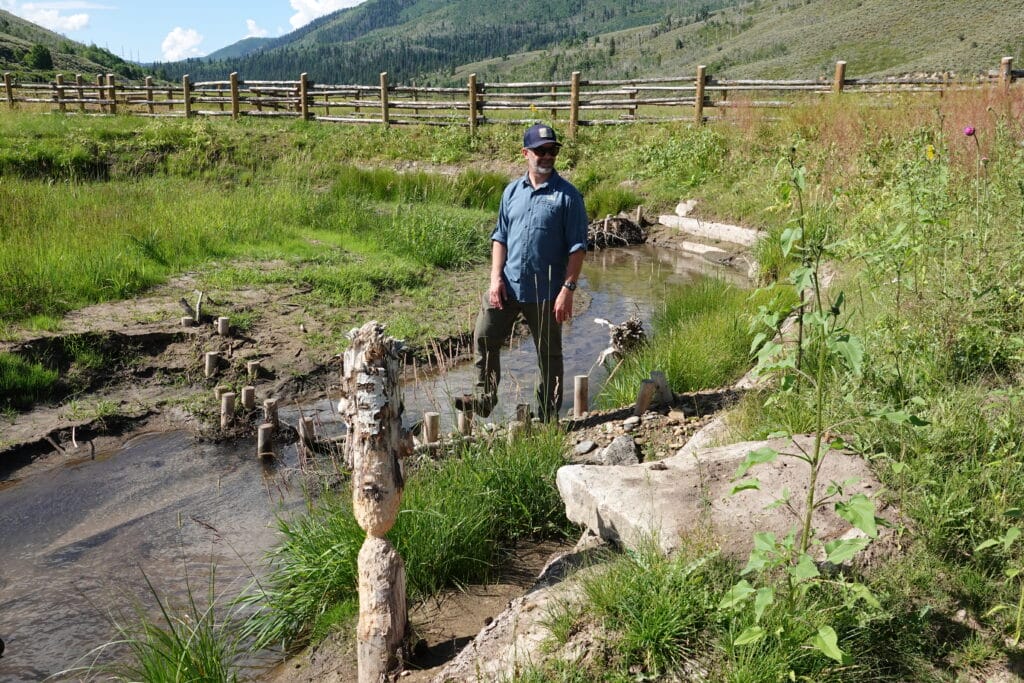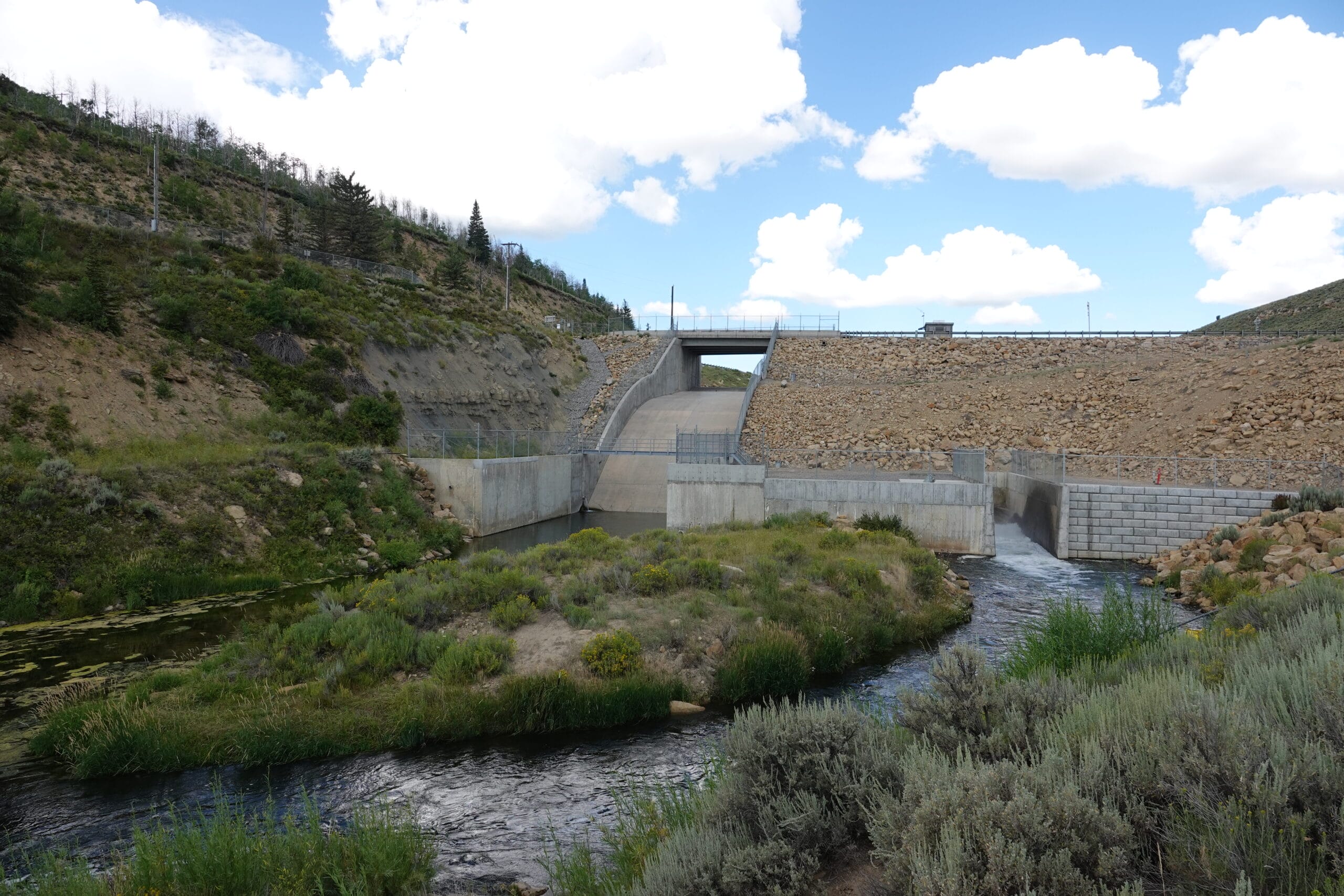New TU film gives a case study of how TU is leasing water rights to benefit rural communities and restore a former Blue Ribbon trout fishery
Last week, Utah State Director Jordan Nielson presented this video to the Utah State Legislature to document the progress being made on water rights leasing and conservation across the state.
“It’s not every day you get approval to drill a hole in a dam owned by the Bureau of Reclamation,” said Nielson. “But it was such a beneficial project to the local community, the fishery, the watershed, and the Carbon Canal Company that it became a case study of partnerships and balancing interests between the community and conservation.”
Scofield Reservoir, where the dam is located, lies in Central Utah along the Price River in a region that has historically had a long relationship with coal mining and energy production. In 2015, a coal plant shut down, which in turn reverted their water rights along the Price River back to Carbon Canal Company, which then had to decide how best to put them to use amidst a historic drought.
“In Utah, most water rights are held by canal companies, which are essentially privately-owned and operated irrigation districts,” said Nielson. “Depending on the existing and historical agreements between these companies, communities, and federal agencies, TU plays a role in getting everyone on board and coming up with solutions to complex water usage issues facing the West.”
Because of agreements between the Carbon Canal Company and the Bureau of Reclamation, the water rights reverted from the coal plant being shut down needed to be used during wintertime, which added to the complexity of the problem.
“Trout were one of the constituencies that actually needed increased flows during wintertime, so we were approached by Carbon Canal Company to work with them, the Bureau of Reclamation, and the Utah Division of Wildlife Resources on finding a way to increase flows to Lower Fish Creek below the dam, which had lost its Blue Ribbon status in recent years,” said Nielson. “So, we went to work trying to figure out how best to restore this fishery with these groups and came up with drilling a hole to allow more water to flow through the dam in winter, thereby putting the former coal plant’s water rights to use, and putting this popular fishery and tourism destination back on track to regain its status in the future.”

Carbon Canal Company reached out to Nielson and his team because of TU’s successful track record of advocating for, and then implementing, successful water leasing programs in Utah. TU fought for legislation allowing for in-stream flow leases in Utah’s legislature in 2008, and for years has leased traditionally consumptive water rights, such as irrigation, and instead kept the water in the stream to benefit native trout.
Subsequently, Nielson has expanded these efforts for TU, even going door-to-door with water rights holders in the state’s agriculture community as early as 2015 to secure water rights leases for the betterment of trout and TU’s priority waters in Utah.
“Carbon Canal Company trusted us as partners because we had worked closely with them through the System Conservation Pilot Program (SCPP), which is a temporary, voluntary, and compensated reduction in consumptive use of agricultural, municipal, or industrial water in the Upper Colorado River Basin,” said Nielson. “The idea is by paying agriculture users to keep their water in-stream, it benefits the Colorado River Basin as a whole since about 80 percent of the river’s usage goes to agriculture. It’s not perfect, but it’s one of the many ways communities and industries are looking to save water during the drought.”
In the case of Carbon Canal Company, it is especially important as they were only able to deliver 38 percent of water its shareholders and users are entitled to on paper in recent years.
“It’s been a process to learn how to make it beneficial to the agriculture community and establish that trust with the agencies operating these types of programs,” said Nielson. “As with any pilot project, there have been growing pains, but with TU having staff living and working in their respective communities across the West, we have been a major help in bridging the gap at times and making progress.”
Examples of TU earning the trust of communities and corporations is prevalent across the Upper Colorado River Basin, where a number of projects – including the SCPP – are funded in part through recent federal infrastructure and climate legislation. The Scofield Dam project, however, was funded through a mix of state and corporate funding from organizations like Intel Corporation and Bonneville Environmental Foundation, who are funding projects that replenish water in the Colorado River Basin.
“Intel’s alliance with Trout Unlimited has helped propel us to net positive water in the United States, where we’ve designed and manufactured some of the world’s most advanced technology for more than five decades,” said Vanessa Delbridge, Global Water Stewardship Program Manager at Intel Corporation. “Their expertise in water rights leasing and conservation makes Trout Unlimited an outstanding collaborator and leader. As Intel expands in the Southwest, we recognize water stewardship as not just an opportunity, but a critical imperative for industry leadership.”
Other examples of TU’s work across the Colorado River Basin include:
Utah
- 20 irrigators completed Colorado River water leasing projects in 2023, which is up from just 6 in 2018. Collectively, these leases conserved about 15,090 acre-feet last year (an acre-foot is about enough water for two households a year).
Wyoming
- For the first round of SCPP in 2023, TU assisted 12 landowners in the Upper Green River Basin in Wyoming with their applications. All of those were awarded last spring and totaled ~$4.8 million with an estimated 8,400 Acre-feet of water conserved.
Colorado
- TU assisted 3 landowners with SCPP applications in the Gunnison Basin in 2023. All three applications were awarded, totaling ~$165,000 and conserving 473-acre feet of water.
Collectively, TU is making a difference across the Colorado River Basin when it comes to confronting the historic drought and climate change. While these leases and actions are a start, the new flow of federal infrastructure funding will allow us to expand our operations and projects even further across the rivers, forests, mountains, and plains we hold dear. Stay tuned.



